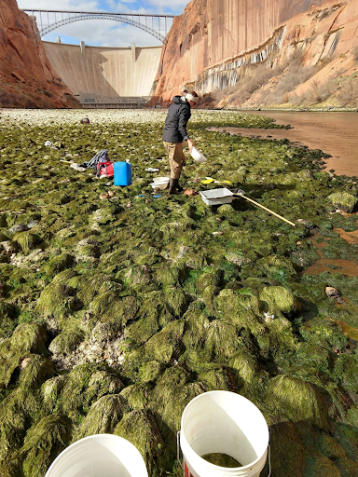Research
Research
Our research projects
Biodiversity of desert aquatic habitats
Freshwater environments in deserts are harsh and isolated. This leads to a high degree of endemism and habitat fidelity. We research the biodiversity of invertebrates, both aquatic insects and parasites. Molecular methods such as eDNA can serve to detect hidden diversity, while potential new species can be collected in the field for museum reference.

A study site directly below Glenn Canyon Dam.
Disturbance and the evolution of behaviors & life histories
Disturbance events such as flood, drought, fire, and disease outbreaks are powerful forces that can shape both the ecology and evolution of organisms. Flash floods are an extreme example of disturbance – in some desert streams flash floods remove over 95% of individuals. Some aquatic insects have evolved strategies for escaping flash floods: they sense the rainfall that often precedes floods and use this as a cue to temporarily abandon streams. CLICK HERE FOR VIDEOS and another page that describes flood escape behaviors in greater detail. Distinct populations of aquatic insects occupy streams with flood regimes ranging from mild (flash floods never occur) to wild (several scouring floods per year), so the potential for fine-scale natural selection is strong. We are using experiments and genetic techniques to determine how populations have evolved in response to these flood regimes, and whether populations can adapt to altered flood regimes due to climate change, dams, and other factors.
River management using prescribed flow regimes
Ecological effects of flow regime modifications (dams, diversions, channelization) on aquatic plants and animals (The Nature Conservancy, US Fish & WildlifeService), including whole-river experiments on the Bill Williams River, Arizona.